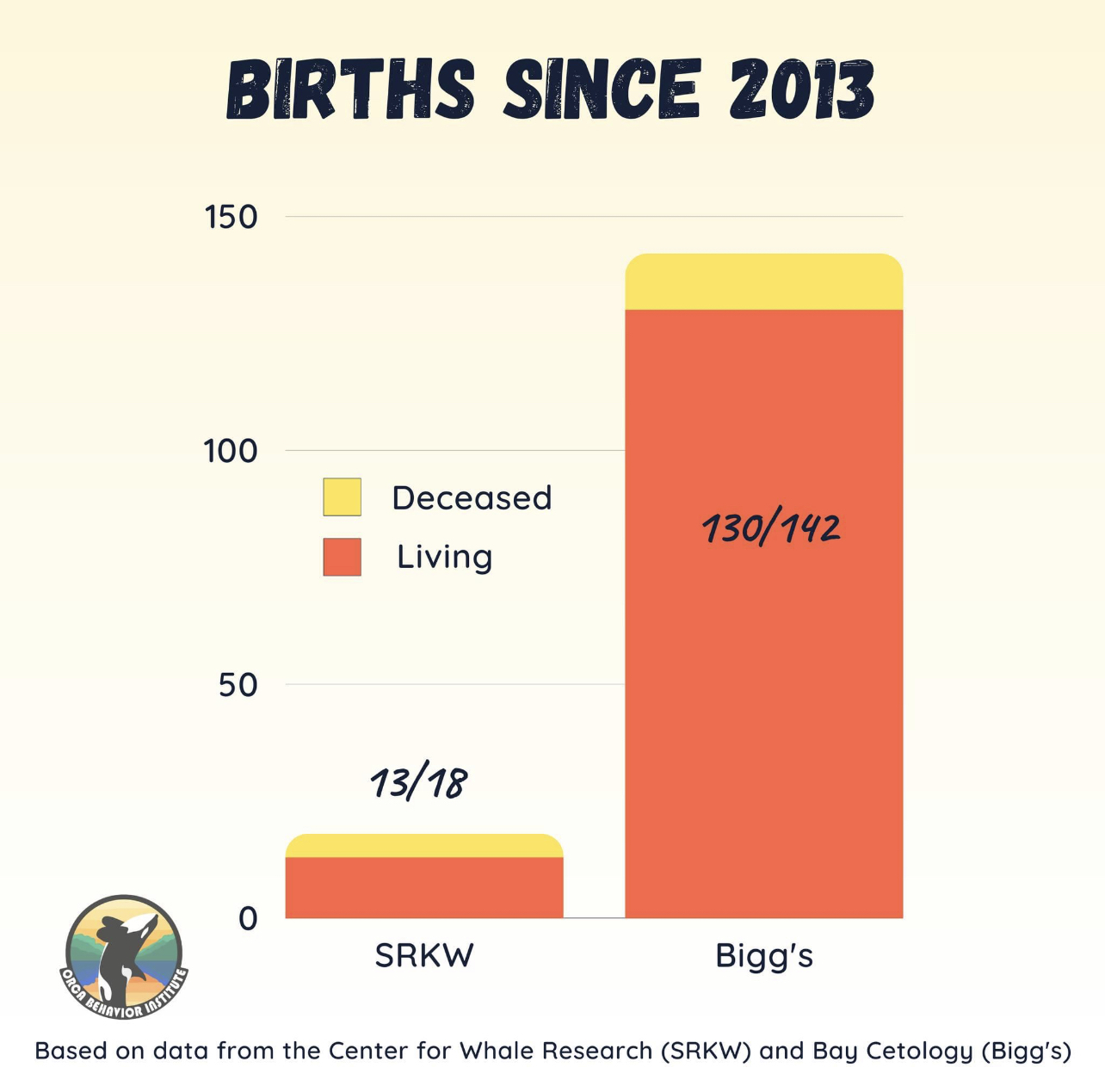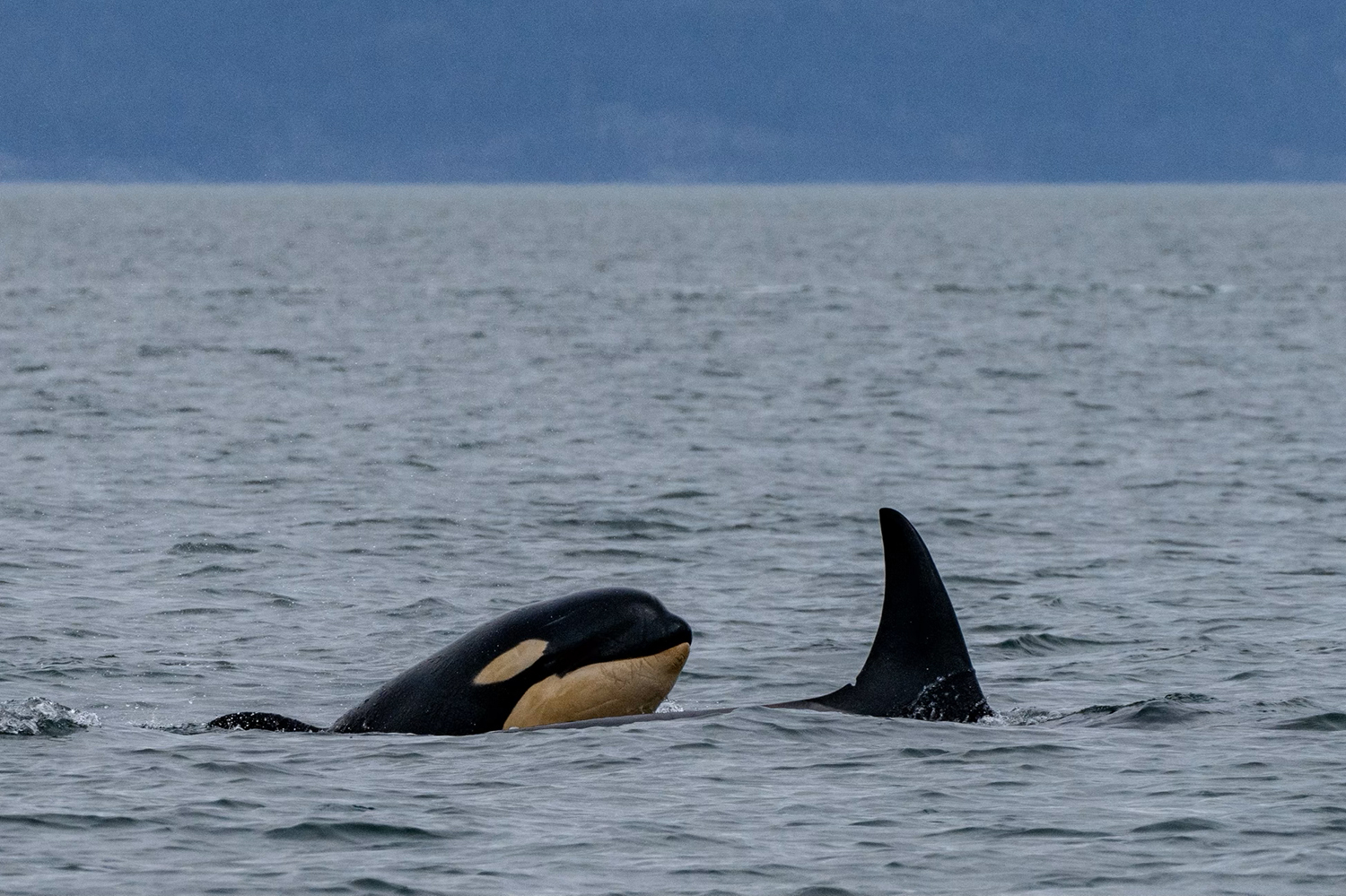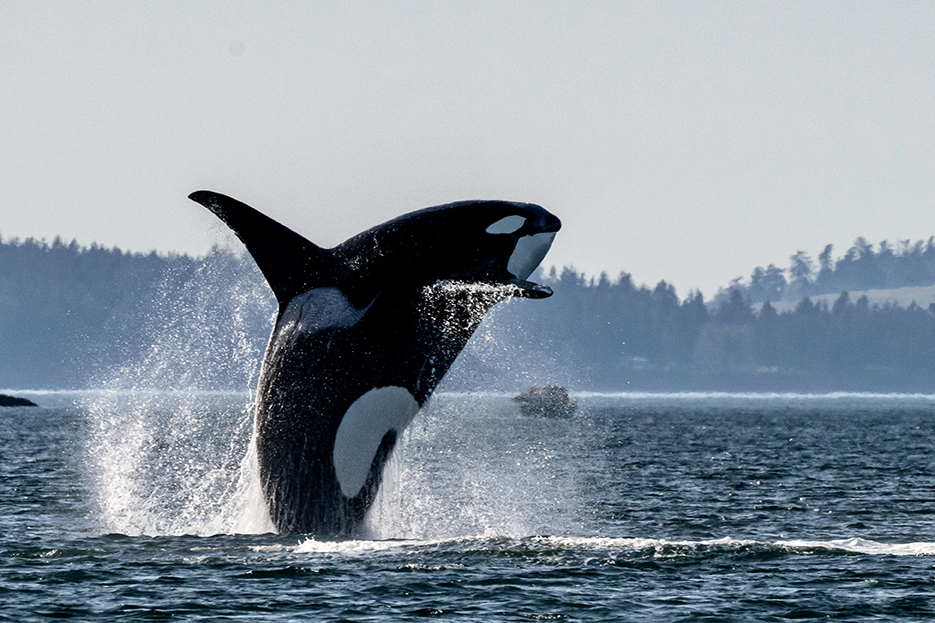
Following up on our last episode where we discussed the low genetic diversity of Antarctic Type D killer whales, in this episode we chat about another recently published genetics paper that focuses on killer whale populations in the Northeast Pacific, including Southern Resident, Northern Resident, Alaskan Resident, Offshore and Bigg's killer whales. Joining us for this discussion is returning guest Monika Wieland Shields, co-founder and director of Orca Behavior Institute.
But first we share some recent sighting stories because so much is happening on the water and we continue to see large groups of Bigg's killer whales in the area. Sara and Jeff ran an all day tour last weekend with Maya's Legacy Whale Watching and spent time with a group of 19 whales from several families, including the T036As, T049A1, T124As, T124C, T125A, T128, and the T065Bs, who had a new calf by her side.
There are so many young whales in the Bigg's population and on this particular encounter, over 25% of the whales were under the age of 3. We discuss the contrast between the number of Bigg's v Southern Resident killer whales under the age of 10 and how this is stunning when seen visually (see image under photos).
We also discuss a recent sea lion hunt right outside of Friday Harbor with the T018s with the T049As, and an interesting encounter with the T046s and T046Bs where T046 herself was not present.
We then turn the conversation to the recently published paper, "Inbreeding depression explains killer whale population dynamics." Monika leads the discussion about inbreeding depression, which is defined as reduced biological fitness that results from breeding between related individuals. The primary finding of the study is that both males and females are less likely to reach age 40 if they have a higher inbreeding coefficient. The Southern Resident killer whales lack of recovery is due, in part, to their lack of genetic diversity compared to the other populations in the Northeast Pacific, which have all been increasing in population. We discussed the role of the captures for marine parks and how this created a population bottleneck. We also discuss other factors hindering Southern Resident recovery and what can be done to address the factors that are within our control.
We also talk about some of the fascinating supplemental information in the paper, including updated paternity information and effective population sizes.
We conclude the episode by announcing our After the Breach Photo Workshop with Sara & Jeff. We will be holding the workshop on Saturday, September 23rd and Sunday, September 24th. You can sign up for one day or both. We will have all day tours (6-8 hours) each day, including catering, photography & whale ID tips, and a lot of fun. If you are interested please email us at afterthebreachpodcast@gmail.com.
If you are enjoying listening to our podcast, please follow/subscribe, leave us feedback/reviews and share with your friends! You can also find us on Instagram, Facebook and Youtube. Please send us feedback or questions at afterthebreachpodcast@gmail.com.
For complete show notes, links and photos, please visit our website: https://www.afterthebreachpodcast.com/e/episode-13-inbreeding-depression-and-killer-whales
Links mentioned in this episode:
- Orca Behavior Institute: https://orcabehaviorinstitute.org/
- Maya's Legacy Whale Watching: https://sanjuanislandwhalewatch.com/
- Inbreeding depression explains killer whale population dynamics: https://www.nature.com/articles/s41559-023-01995-0
Photos mentioned in this episode:


T065B with new calf T065B3. Photo by Sara Shimazu

T019B. Photo by Sara Shimazu
No comments yet. Be the first to say something!